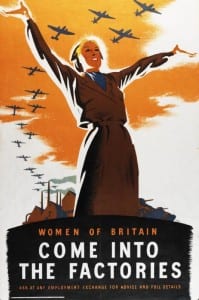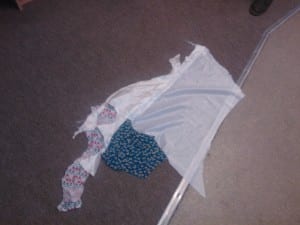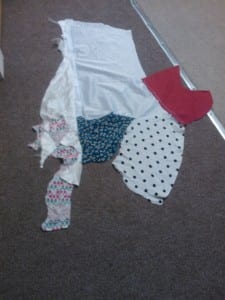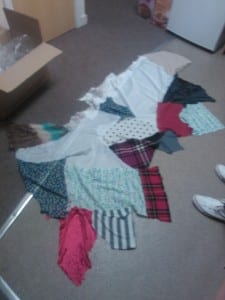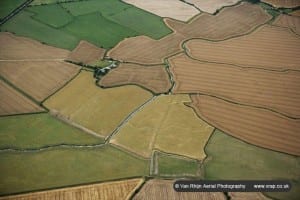The journey of our site was an exciting experience, from the abandoned building that stood at the end of my street to creating and performing past events that connected to the Lincoln Grandstand under its own roof. By visiting and collecting information from The Lincoln Archives and the Lincolnshire Life museum and other useful sources, we managed to explore the reoccurring theme that stayed throughout our performance groups and bring them to life. Our theme that we were connected to as a whole group was War, the history of the Lincoln Handicap races and the history of the building itself. We split up into individual groups to explore and develop further in our chosen themes.
The women of war group which I was apart of explored sewing as we found an old sewing machine inside the Grandstand. We used the idea of the John Newland piece “The Riddler’s Jacket” as a representation of the sewing of the linen for the aeroplanes during the war. We did this by creating a trail across the ceiling leading from our performance space as an indication for the audience to watch. This was not just our main attraction to the piece; we also focused on the beauty and fashion of the women. To reflect this, we performed routines of getting ready for a day at the factories, by putting on make up and making ourselves presentable. First of all, we wanted to make use of the space inside and outside of the space. Starting with outside, we used the wall where they used to chain the horses up for the public to spectate whether they will be good enough to bet on before they race. We performed a sequence of putting on make up, perfume and brushing our hair until the audience were escorted into the building. The second part consisted of music, drawing lines of the back of our legs and dabbing teabags on our legs, to represent the fake tanning they used to do. Then as we escorted the audience to the next room, we got ready for our main section.
Our aim was to show what a day was like in the factories such as how busy and the loud noises from the machines. To show this, we used sewing machines, with one of us sorting the material out and the other sweeping the floor, whilst we did this the pace of the piece was fast also. This was to represent the mechanism of a machine. Because community was a part of our piece, we wanted to show the difference between the community now and what it was like back then. Whilst we were re enacting our “machine” routine, at the same time cups of tea were being made. When they were drinkable, we passed the cups of tea to our audience as a symbol of community and bringing people together. Then suddenly we would take the cups of tea away and throw it down the drain in front of them to show that there isn’t a community anymore at the Grandstand since the races ended.
After that we presented to the audience ginger bread at the refreshment kiosk at the Grandstand as it was served amongst with fruit and alcohol beverages to the race goers, and then we joined them to sit on the Grandstand whilst another group did a section about the Grandstand’s feelings and that the past has faded away from the site in which that was our cue to leave as we were the representation of the people of the past.
As a whole group, we had a confident and focus presence throughout the performance. With the leaders taking the audience on a controlled tour around our site, we were able to show them creatively what we had been learning over the past five months. Each individual group tackled the facts and figures that they had found and developed their piece through projection, textiles, music and live art. We all presented this in a clear and exciting way for the audience to see for example, we made sure we used as much of the site as possible, for example our group used the bathroom so the shower was our entrance and exit with the use of the shower curtain as the door, there was a groups who used the walls to project an image of a horse and camouflage themselves into the wall by using newspaper. There was also the use of the outside, where the audience at the beginning took the beginning seats to see the women of the war group using a wall to which was used to tie the horses before the races. There were the two other groups which marked out the two other Grandstand which where relevant to the site.
As an individual of the whole performance, I felt that the site was used to its full potential and that we brought history back to the grandstand with a wide range of audience members to experience this with us. Even though many groups themes were war, we all took one aspect and all created something different between us which linked in with the site. Some other groups were based on the horses and the history of Grandstand which made the audience think about what the site could be used as next as it is a shame that nothing is being made use of it.
